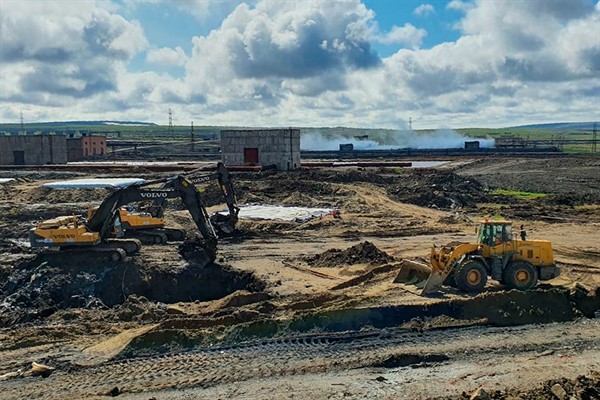Russia’s Arctic region is experiencing one of the hottest summers on record, and it is only early July. The mercury hit 100 degrees Fahrenheit in parts of northern Russia last week, more than 30 degrees above the average for this time of year, and meteorologists are forecasting more blistering heat in the days and weeks ahead.
At first glance, the heat wave might look like great news for Russia’s giant oil and natural gas companies. The higher temperatures will accelerate the melting of permafrost in the Arctic, making it easier to extract the rich deposits of natural resources buried underneath it, including billions of barrels’ worth of proven oil reserves. All told, scientists estimate that some 2.5 million square miles of permafrost—roughly 40 percent of the world’s total—could disappear within the next 80 years, much of it in Russia.
Yet the melting of Russia’s permafrost spells disaster for the Earth’s climate, as well as for Russia’s national and energy security. As permafrost melts, it releases greenhouse gases, including methane, carbon dioxide and nitrous oxide. An estimated 1,400 gigatons of carbon are frozen in permafrost across the Arctic circle, making it one of the largest carbon sinks in the world. And while Russia shares the land that falls within the Arctic circle with seven other countries—the United States, Canada, Norway, Sweden, Finland, Denmark and Iceland—it accounts for the largest share of Arctic land. It is also the only country to make resource extraction from the Arctic an integral part of its economic development strategy.

